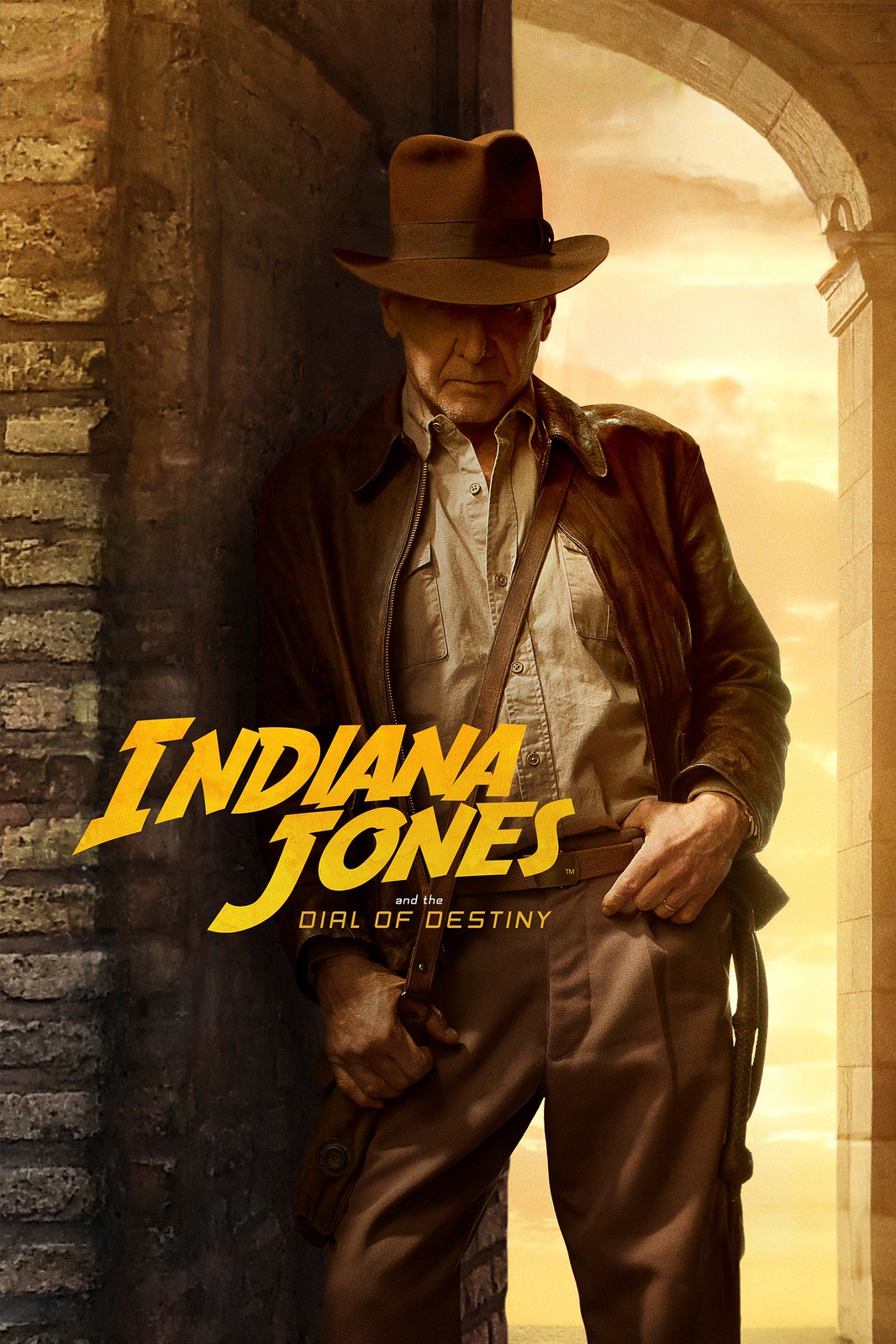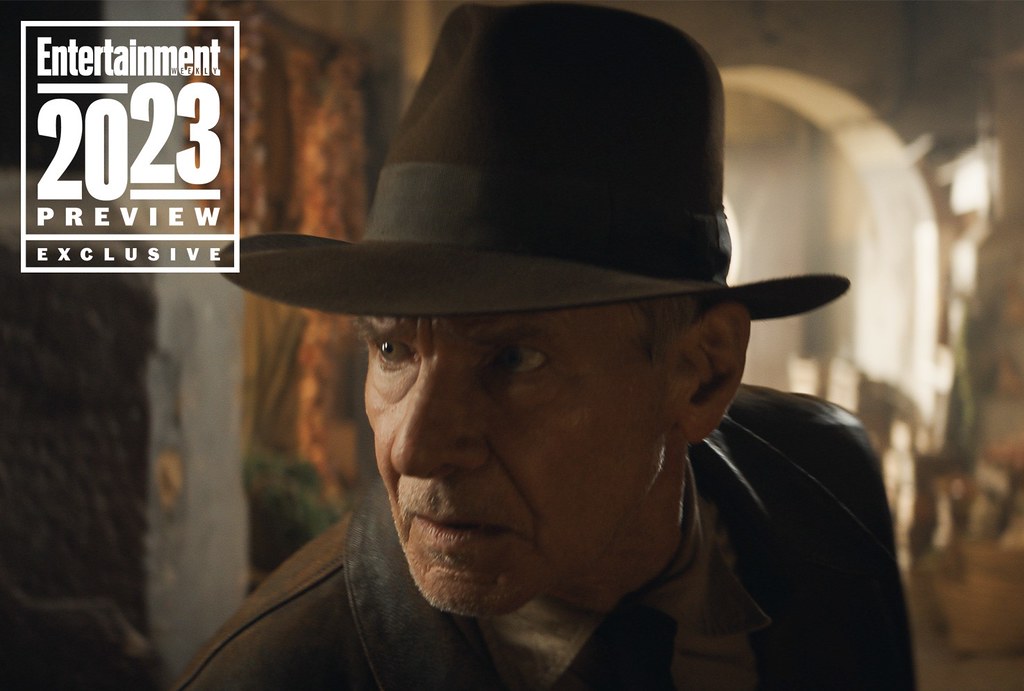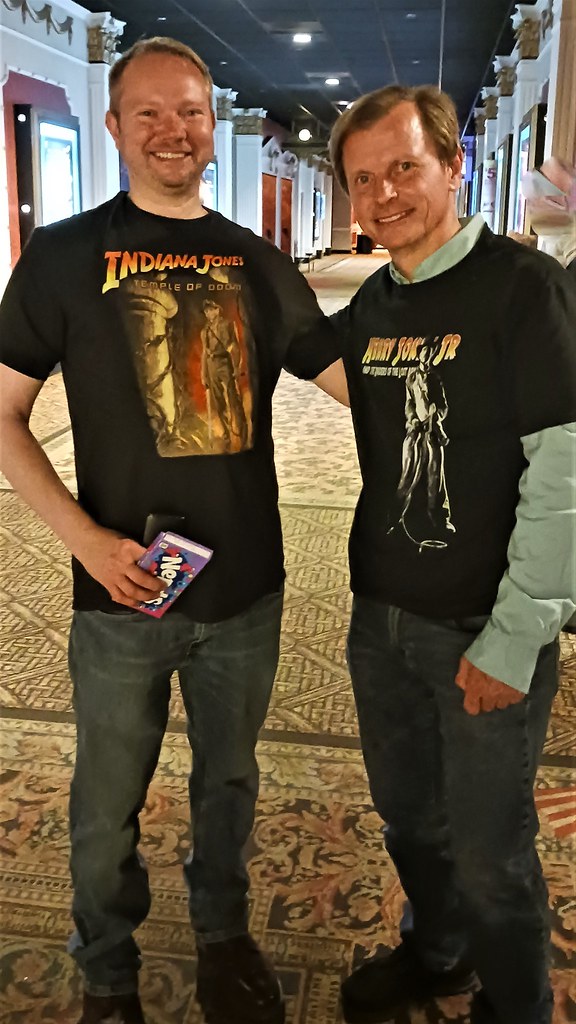Indiana Jones and the Dial of Destiny (2023) is the last link to the summer blockbusters I grew up with as a child of the 1980s. I was in a theatre to experience the original Star Wars movies and the Christopher Reeve Superman movies, and certainly the best adventures of Indiana Jones. In recent years, I’ve given up on the Star Wars “content” that Disney continues to crank out and stream, but I still had genuine anticipation for this fifth Indiana Jones movie. I had been waiting over two years to see it.
The 2008 predecessor, Indiana Jones and the Kingdom of the Crystal Skull, had even more anticipation associated with it and certainly more media buzz– and merchandising. (I saved every one of those Burger King toys that came out.) But the end result on the screen proved to be a disappointment by any objective standards, certainly when compared to Raiders of the Lost Ark (1981). Flying refrigerators, inquisitive prairie dogs, and a greaser by the name of Mutt swinging through the jungle alongside monkeys was a little too much for any Indy fan to bear. And poor Karen Allen holding that dislodged steering wheel, sitting in a daze like most of us watching this debacle unfold. And the fact that the adventurer-hero was not allowed (by his director) to fire a gun proved that Steven Spielberg was no longer the man for this job. A few good visuals (and one-liners) aside, Crystal Skull is pretty lackluster stuff.
So it was with a lot of eagerness– and some trepidation– that I circled June 30, 2023, on the movie calendar. This final adventure would instead be directed by James Mangold (Ford v. Ferrari). I knew that with someone else at the helm, it couldn’t be worse than the last one. If nothing else, just be better than Crystal Skull. Please.
Indiana Jones and the Dial of Destiny, which is set in 1969, involves a search for Archimedes’ dial– a mechanism that in the film has powers beyond those of its real-life counterpart, the Antikythera dial. Indiana Jones, accompanied by his goddaughter Helena (or does Indy accompany her?), has one half of it, but the plot involves finding the other half before the Nazi villain Voller can. Mindful of spoilers, I won’t mention what it can do exactly, but besides Voller, some government agents are also involved in the globe-trotting pursuit. If you squint your eyes and look at the story with its world-altering “MacGuffin” (divided into two parts), double-crossing heroine, group chases, and a key scene involving a train, there are similarities to Mission Impossible: Dead Reckoning. But whereas the Tom Cruise film actually has off-the-wall action sequences, the Mangold film doesn’t offer up much that is actually thrilling.
Dial of Destiny is a film without any of the intensity that we experienced in Raiders. Think of that desert truck chase. It has none of the suspenseful set-pieces that we saw in Temple of Doom. Remember the collapsing ceiling with the spikes? I realize we have a hero near 80 whose career is now at sunset, and that’s a poignant undercurrent of the film, but maybe he could’ve used his intelligence– rather than any physical derring-do– to extricate himself from some situations instead of having others do it for him. For instance, at one point late in the film, one of the henchmen, an oversized brute, meets a watery demise thanks to a kid who didn’t need to be in this movie at all. (“Teddy” is Helena’s sidekick much like what “Short Round” was to Indy in Temple of Doom.)
Beyond the World War II flashback sequence that opens the film, there really is nothing genuinely impressive for the remainder of the film’s running time– probably not the best scenario for a series inspired by Republic movie serials. There’s certainly action in this patchwork storyline, but nothing like what we saw in the original trilogy. There was, towards the end, an opportunity for a “whip vs. sword” conflict (if the filmmakers had gone that route and attempted a truly gonzo ending), but Mangold (or Disney) just didn’t have that creative awareness. Instead, the climax involves one character making a decision for Indy. With Dial of Destiny, we want to believe the film is better than what it is. We want to have that same level of expectation that we had in 1984 when lines were around the block for Indiana Jones and the Temple of Doom.
When asked about it, I’ve told people Dial of Destiny is better than Crystal Skull. That might not sound like a ringing endorsement given the relatively low bar that was set, but it’s not as bad as some in the media have made it out to be. After all, it’s the only summer movie I’ve seen twice– and the only one to bring tears to my eyes. There are at least two moments in the film that struck an emotional chord in me, and any movie that can do that is certainly not “one of the worst films of 2023,” as one local critic called it.
To its credit, Dial of Destiny does have the tone that has been missing since 1981. After Raiders, the films became essentially comedy adventures to varying degrees of success. It got to the point where Crystal Skull became, at times, a live-action cartoon. Mangold at least got this right; Dial of Destiny is an adventure film with humor, not the other way around. And hey, the hero actually fires his gun again in a shoot-out!
A noteworthy moment is a brief exchange the villain, played by Mads Mikkelsen, has with a hotel porter, who happens to be African-American. Voller, learning the porter had fought in World War II, asks him point-blank if he’s now enjoying his victory. It’s actually one of the most unsettling scenes of pure villainy in the entire film. Now that’s something you would not have seen in Spielberg’s Kingdom of the Crystal Skull.
One of my favorite scenes is Indy’s arrival at the Hotel L’Atlantique in Morocco, where he tracks his goddaughter to an illegal auction. She plans to sell her half of the dial to the highest bidder. Besides the exceptional lighting and the exotic atmosphere the scene evokes, it’s one of the few moments where Indy is actually doing something on his own, without constant companions. Pre-release artwork and studio stills suggested the lone hero back in the saddle, but he’s rarely alone and almost never in the driver’s seat in this one — well, except maybe for a tuk-tuk chase involving his goddaughter’s former lover. (Another minor subplot that could’ve easily been removed in a movie that runs 2 hours and 34 minutes.)
If it can be said by hardcore purists that the Star Wars films truly ended in 1983– back in the days when those films were actual events– then I might add that the Indiana Jones films really ended in 1989 with our hero riding off into the sunset with his father at his side. Most franchises, however, don’t know when to say goodbye. They return, believing they can catch lightning in a bottle again while catering to the fanboys who want more of the same. It almost never works out the way we imagine it will. There are only faint echoes in these movies, callbacks that appeal to our sense of nostalgia. There is a time for everything, and when that moment has passed, it’s best to simply move on and hold onto the memories the earlier films gave us.
Dial of Destiny ends on a satisfying note even if the rest of the film doesn’t quite measure up. Not surprisingly, it’s a callback to the first film. It’s a very touching moment that suggests there should’ve been more substance there. Dial of Destiny should’ve been filmed with as much care as Oppenheimer, it should’ve had more spectacular action sequences than Mission Impossible, and for an Indiana Jones movie, it should’ve out-grossed Barbie at the box office. That said, it at least serves as a coda for a series that deserved better than Crystal Skull. It was an opportunity for fans to see Harrison Ford one last time as the “man in the hat.” And lastly, it was a chance to pass the torch from one generation of moviegoers to another. That is the ultimate reward.
~MCH



